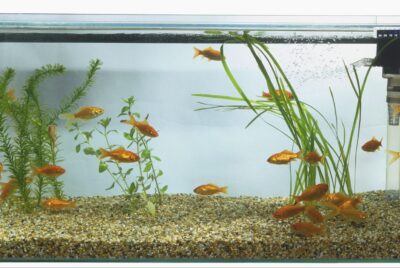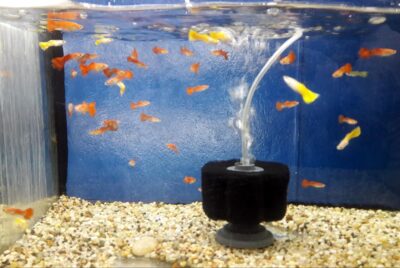Protein Skimmer Pump
As a devoted fishkeeping enthusiast and advisor, I understand the importance of maintaining optimal water quality in aquariums. One crucial tool in achieving this is the protein skimmer pump. In this article, I’ll guide you through the world of protein skimmer pumps, providing helpful suggestions and reasons for my recommendations.
What is a Protein Skimmer Pump?
A protein skimmer pump is a vital component in an aquarium filtration system. Its primary function is to remove organic waste, proteins, and other pollutants from the water column. By creating a frothy mix of air and water, the skimmer pump effectively captures and eliminates these harmful substances, ensuring a healthier aquatic environment.
Factors to Consider When Choosing a Protein Skimmer Pump
Selecting the right protein skimmer pump for your aquarium is crucial for optimal performance. Several factors come into play, including tank size, skimmer pump capacity, energy efficiency, noise level, and durability. Considering these aspects will help you make an informed decision and achieve the best results for your setup.
Benefits of Protein Skimmer Pumps
Investing in a protein skimmer pump offers numerous advantages for your aquarium. Firstly, it efficiently removes organic waste and toxins, preventing the buildup of harmful substances that could compromise the well-being of your aquatic inhabitants. Additionally, it helps control algae growth and reduces water discoloration, keeping your tank visually appealing. Furthermore, the increased oxygenation provided by the skimmer pump promotes the overall health of fish, corals, and other marine organisms.
Types of Protein Skimmer Pumps
When it comes to protein skimmer pumps, there is a wide array of options available in the market. Each type of skimmer pump has its own unique design, operating principles, and advantages. Understanding the differences between these types will help you make an informed decision and select the most suitable protein skimmer pump for your aquarium. Let’s explore the various types in more detail:
Venturi Skimmer Pumps
Venturi skimmer pumps are popular in aquariums for effectively eliminating organic waste due to their high efficiency and performance.These pumps utilize the Venturi effect, which involves forcing pressurized water through a narrow tube. As the water passes through the narrow section, it creates a vacuum that draws in air, generating a mixture of fine bubbles. The foamy blend of air and water is directed into the skimmer chamber, where it interacts with organic substances.
Venturi skimmer pumps are highly effective at removing proteins and other waste materials from the water column. They provide excellent foam production and are suitable for both small and large aquariums. Additionally, they are generally easy to install and maintain.
Air-Driven Skimmer Pumps
Air-driven skimmer pumps operate on a simple and cost-effective principle. They rely on an air stone or diffuser to inject air into the water column, creating a mixture of tiny bubbles. These bubbles rise through the skimmer chamber, where they attract and capture organic waste materials. The produced foam is collected and extracted from the system, effectively removing impurities and organic waste from the aquarium.
Air-driven skimmer pumps are favored by hobbyists for their reliability, low energy usage, and traditional filtration approach. However, they may have slightly larger bubbles, impacting efficiency in removing specific waste.
Needle Wheel Skimmer Pumps
Needle wheel skimmer pumps are highly efficient and effective for protein skimming, earning widespread recognition for their performance in the aquarium community. These pumps feature a specialized impeller with numerous fine needles arranged around its circumference. As the impeller spins, it chops the incoming water, creating a spray of fine bubbles. Fine bubbles in protein skimmers offer a larger surface area, maximizing contact with organic waste particles and improving skimming efficiency.
Needle wheel skimmer pumps excel at generating dense foam, which effectively removes waste, making them highly advantageous in protein skimming.
In reef aquariums, where the well-being of corals and delicate invertebrates is vital, air-driven skimmer pumps are often preferred for their ability to maintain optimal water quality. Needle wheel skimmer pumps are available in various sizes, making them suitable for a wide range of aquarium setups.
Installing and Maintaining a Protein Skimmer Pump
To maximize the benefits of your protein skimmer pump, proper installation and maintenance are key. For installation, (1) choose a suitable spot, (2) ensure correct plumbing, and (3) adjust water level and air intake as directed.Regular maintenance involves cleaning the skimmer cup, checking water flow, and replacing worn-out parts. These simple tasks will help maintain the pump’s efficiency and prolong its lifespan.
Troubleshooting Common Issues with Protein Skimmer Pumps
While protein skimmer pumps are generally reliable, occasional issues may arise. Skimmer overflow is a common issue, but adjusting water level or foam production can fix it and prevent spills.Excessive foam could indicate a problem with the air intake or impeller, requiring inspection and cleaning. To reduce noise, make sure the skimmer pump is firmly placed and well-lubricated for smooth operation and minimal vibrations. Addressing these issues promptly will ensure your protein skimmer pump operates smoothly.
The Best Protein Skimmer Pumps on the Market
Considering the wide range of options available, I’ve compiled a list of top protein skimmer pumps based on their performance, reliability, and positive customer reviews. These recommendations cater to different budgets and include leading brands renowned for their quality and effectiveness. Whether you’re a beginner or an experienced aquarist, these pumps will meet your filtration needs with excellence.
Tips for Maximizing the Efficiency of a Protein Skimmer Pump
In addition to selecting the right protein skimmer pump, there are several techniques you can employ to optimize its effectiveness. Feed properly, circulate water well, and maintain regularly for efficient skimmer pump operation. These small but significant actions will make a noticeable difference in the water quality of your aquarium.
Conclusion
As we conclude this exploration of protein skimmer pumps, it’s evident that these devices play a vital role in maintaining a clean and healthy aquatic environment. By efficiently removing organic waste, controlling algae growth, and promoting oxygenation, protein skimmer pumps contribute to the overall well-being of your fish and corals. Remember to consider the factors mentioned, select the right type of skimmer pump, and follow installation and maintenance guidelines for optimum performance.
Frequently Asked Questions
Q: How often should I clean the protein skimmer cup?
A: Cleaning the skimmer cup every one to two weeks, or as needed, is recommended to prevent excessive buildup and maintain optimal performance.
Q: Can I use a protein skimmer pump in a freshwater aquarium?
A: Protein skimmer pumps are primarily designed for marine and reef aquariums, as they target organic compounds specific to saltwater environments. They are not necessary for most freshwater setups.
Q: What is the ideal water depth for a protein skimmer pump?
A: The optimal water depth can vary depending on the specific protein skimmer pump model. Refer to the manufacturer’s instructions for the recommended water level range.
Q: Why is my protein skimmer pump producing too much foam?
A: Excessive foam production could be due to several factors, such as high protein levels, incorrect water level, or improper air intake adjustment. Check these factors and make necessary adjustments accordingly.
Q: Can a protein skimmer pump be used as the sole filtration method for an aquarium?
A: Protein skimmer pumps excel at removing organic waste, but they thrive when combined with mechanical and biological filtration systems for comprehensive aquarium maintenance.m maintenance.




